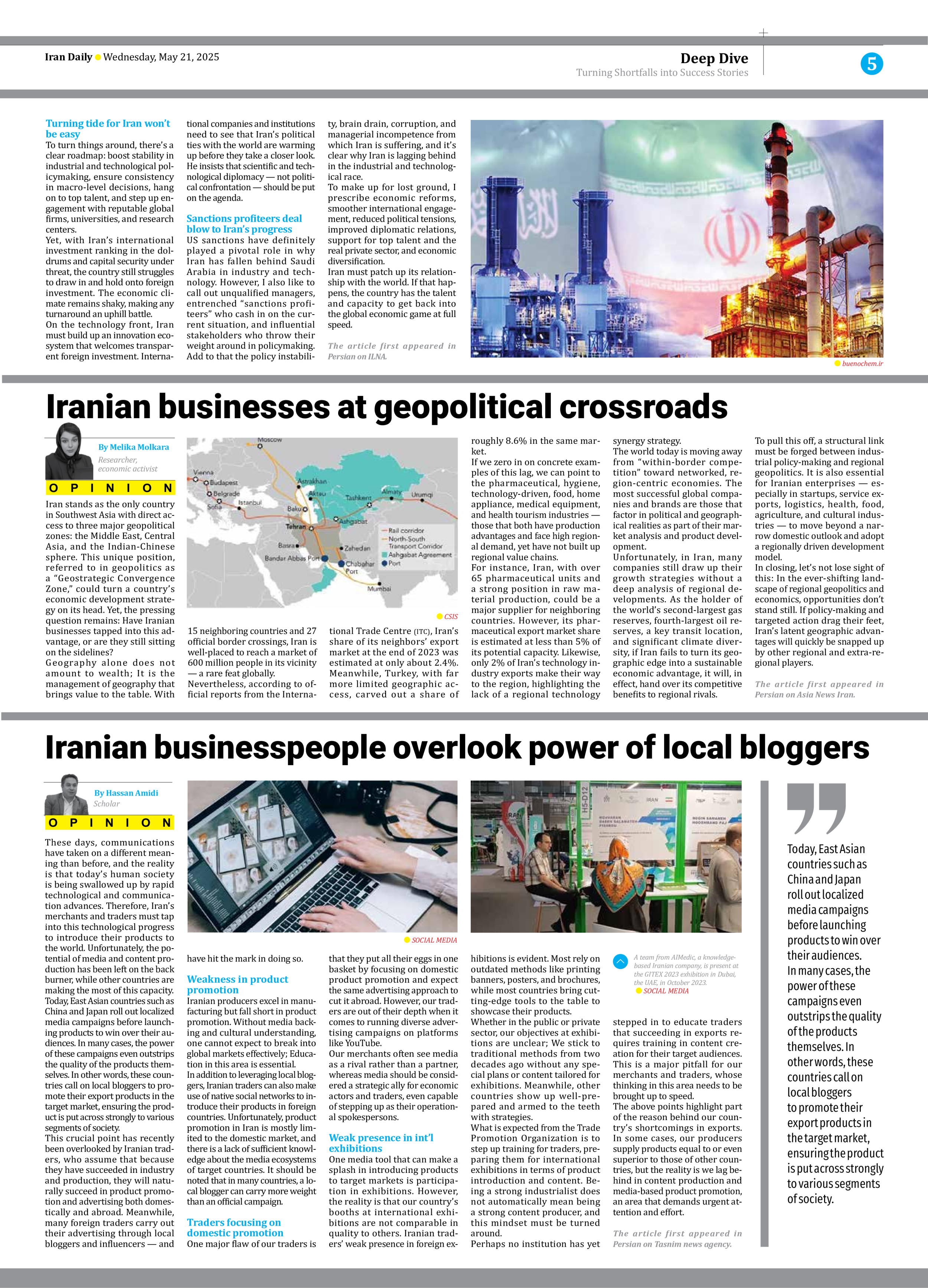
Iranian businesses at geopolitical crossroads
By Melika Molkara
Researcher,
economic activist
Iran stands as the only country in Southwest Asia with direct access to three major geopolitical zones: the Middle East, Central Asia, and the Indian-Chinese sphere. This unique position, referred to in geopolitics as a “Geostrategic Convergence Zone,” could turn a country’s economic development strategy on its head. Yet, the pressing question remains: Have Iranian businesses tapped into this advantage, or are they still sitting on the sidelines?
Geography alone does not amount to wealth; It is the management of geography that brings value to the table. With 15 neighboring countries and 27 official border crossings, Iran is well-placed to reach a market of 600 million people in its vicinity — a rare feat globally.
Nevertheless, according to official reports from the International Trade Centre (ITC), Iran’s share of its neighbors’ export market at the end of 2023 was estimated at only about 2.4%. Meanwhile, Turkey, with far more limited geographic access, carved out a share of roughly 8.6% in the same market.
If we zero in on concrete examples of this lag, we can point to the pharmaceutical, hygiene, technology-driven, food, home appliance, medical equipment, and health tourism industries — those that both have production advantages and face high regional demand, yet have not built up regional value chains.
For instance, Iran, with over 65 pharmaceutical units and a strong position in raw material production, could be a major supplier for neighboring countries. However, its pharmaceutical export market share is estimated at less than 5% of its potential capacity. Likewise, only 2% of Iran’s technology industry exports make their way to the region, highlighting the lack of a regional technology synergy strategy.
The world today is moving away from “within-border competition” toward networked, region-centric economies. The most successful global companies and brands are those that factor in political and geographical realities as part of their market analysis and product development.
Unfortunately, in Iran, many companies still draw up their growth strategies without a deep analysis of regional developments. As the holder of the world’s second-largest gas reserves, fourth-largest oil reserves, a key transit location, and significant climate diversity, if Iran fails to turn its geographic edge into a sustainable economic advantage, it will, in effect, hand over its competitive benefits to regional rivals.
To pull this off, a structural link must be forged between industrial policy-making and regional geopolitics. It is also essential for Iranian enterprises — especially in startups, service exports, logistics, health, food, agriculture, and cultural industries — to move beyond a narrow domestic outlook and adopt a regionally driven development model.
In closing, let’s not lose sight of this: In the ever-shifting landscape of regional geopolitics and economics, opportunities don’t stand still. If policy-making and targeted action drag their feet, Iran’s latent geographic advantages will quickly be snapped up by other regional and extra-regional players.
The article first appeared in
Persian on Asia News Iran.







